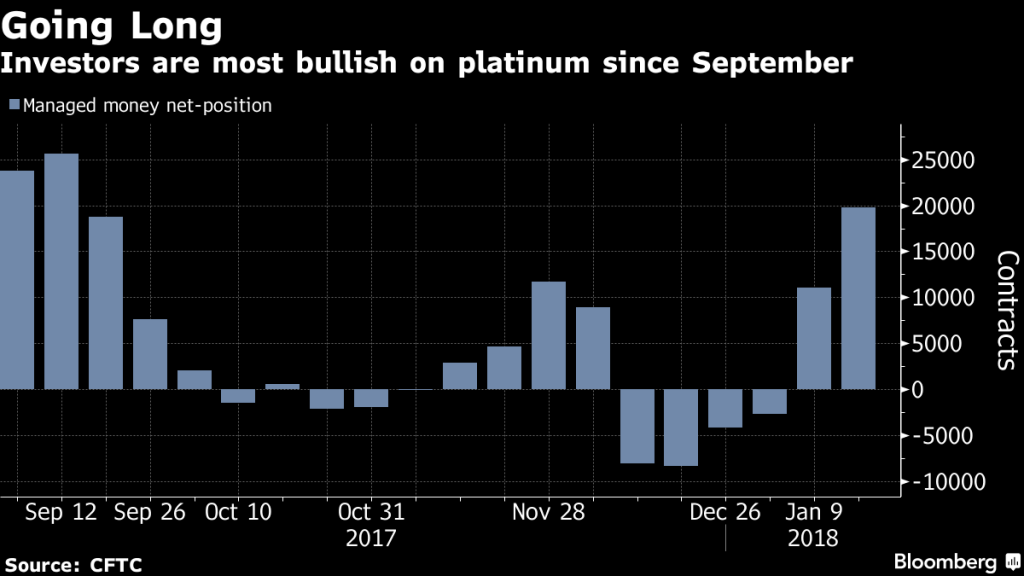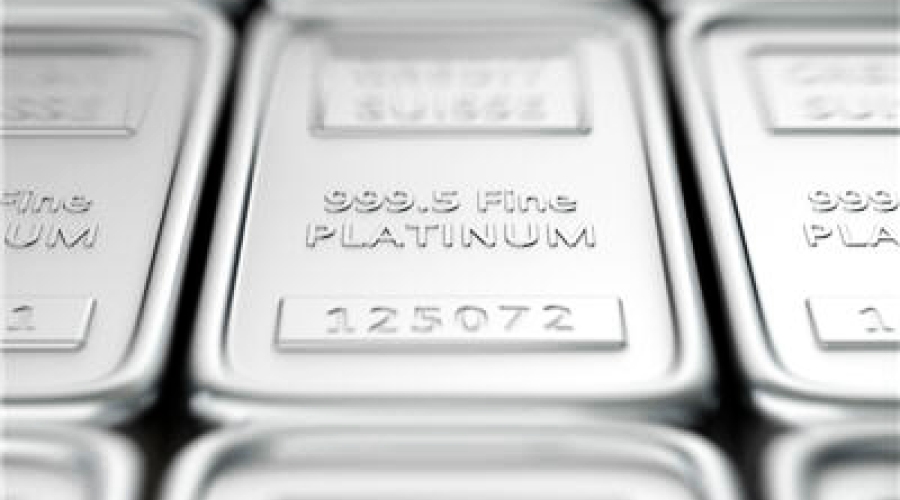Money managers increased their bets on a rally for platinum, a commodity used in pollution-control devices for cars. Investors had been pessimistic on prices until the start of this year, but that sentiment changed as signs of synchronized global growth boosted expectations for demand. The metal’s strong correlation to gold is also providing support as a weaker dollar propels alternative assets higher.

While platinum rose in 2017, it was a lackluster performance compared with gold, silver and palladium. After Volkswagen admitted falsifying pollution data for its cars in 2015, the outlook for platinum had dimmed as purchases of diesel-fueled vehicles fell in Europe. Now, things are turning around as China starts implementing stricter emissions standards, fueling increased demand for the metal.
Precious metals have continued to climb even after the Federal Reserve raised borrowing costs in December for the third time in 2017 as traders sought a store of value. The dollar is trading near a three-year low against a basket of 10 currencies.
‘Sentiment change’
“There has been a change in sentiment in platinum,” said Maxwell Gold, a director of investment strategy at ETF Securities, which overseas $2.5 billion in assets in the U.S. “With the price rebound since the Fed raised rates last year, platinum is beginning to catch up to palladium and gold.”
In the week ended Jan. 16, money managers raised their net-long position, or the difference between bets on a price increase and wagers on a decline, by 79 percent to 19,806 futures and options, according to U.S. Commodity Futures Trading Commission data released Friday. That’s the highest since mid-September.
Platinum futures have climbed 8.7 percent in January to $1,020.10 an ounce on the Comex in New York. That compares with this month’s 3.5 percent gain for palladium, 1.8 percent for gold and a 0.6 percent slide for silver.

Tighter emission standards in China include lower pollution limits set this year for all diesel vehicles, which will mean higher use of platinum catalytic converters to meet the requirements, Gold said.
Production deficit
As consumption is poised to rise, stockpiles in warehouses tracked by the New York Mercantile Exchange have shrunk to the lowest since 2016. This year, supply will probably outpacing demand by 275,000 ounces, as jewelry and industrial uses climb, according to the World Platinum Investment Council. The deficit will widen from 15,000 ounces in 2017.

In South Africa, which accounts for more than 70 percent of global supply of platinum, an improving economic outlook has spurred a rally in the rand against the dollar. That raises the relative costs of producing metal, putting more pressure on South African mining companies already struggling to stay afloat, according to Shree Kargutkar, a portfolio manager at Toronto-based Sprott Asset Management, which oversees C$11.5 billion ($9.2 billion).
Investors are also piling into exchange-traded funds. On Jan. 16, the combined holdings of ETFs tracked by Bloomberg reached 2.54 million ounces, the highest since November 2015.
“That trend is definitely real, because it’s not one of those short-term blips that we see,” Kargutkar said. “Investors are looking at platinum as a store of value. In the short-term, that will be the primary driver.”
Story by Luzi Ann Javier.



Comments